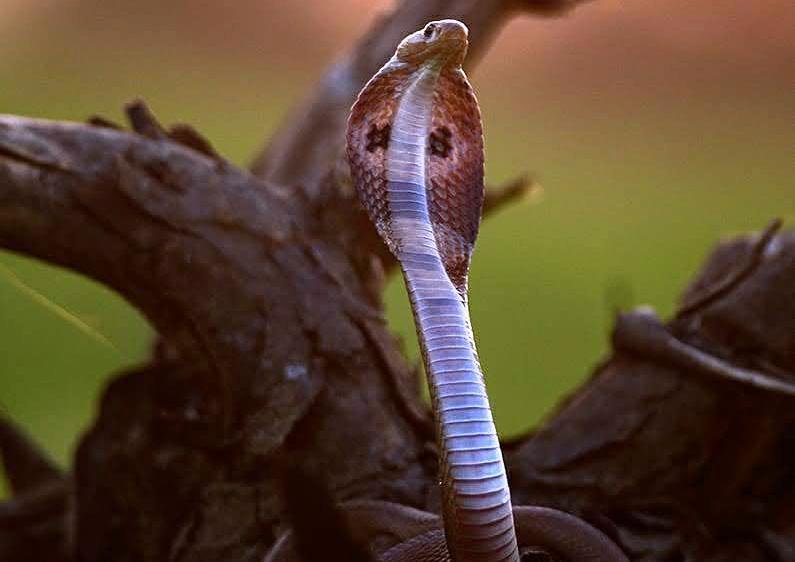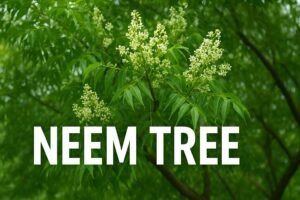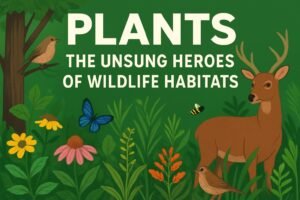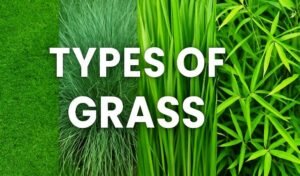Introduction to Cobra Snakes
Cobra snakes are among the most fascinating and feared reptiles on the planet. Known for their dramatic hood display, these snakes belong to the genus Naja and are found across Asia and Africa. The Indian cobra (Naja naja) is perhaps the most well-known species due to its frequent presence in snake charmers’ performances and rural human encounters.
Cobras have a slender body, strong musculature, and excellent sensory perception. They can raise the front portion of their body and spread their iconic hood as a warning sign when threatened. Their ability to deliver a potent neurotoxic venom makes them formidable predators, capable of subduing prey within seconds.
In ecosystems, cobras play a vital role in controlling rodent populations and maintaining the ecological balance. Without these apex reptilian predators, the spread of disease and crop damage from rodent overpopulation would be a serious issue.
Unfortunately, many myths surround cobras. People often believe cobras drink milk, seek revenge, or remember human faces — none of which are true. These misconceptions lead to unnecessary fear and killings. In reality, cobras avoid human interaction and only bite in self-defense.
Cobra Snake
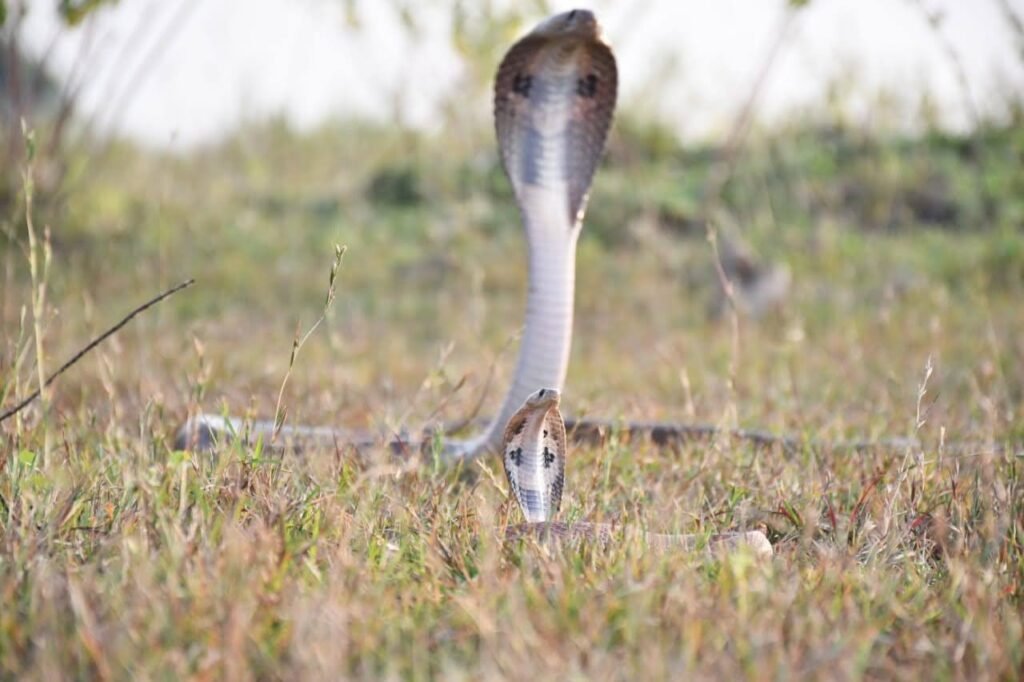
| Feature | Description |
|---|---|
| Snake Name | Cobra Snake |
| Scientific Name | Naja naja (Indian Cobra) |
| Wild Life Protection Act (WLPA) | Schedule II |
| Regional Names (India) | Hindi: नाग (Naag), गेहुअन (Gehuan), कोबरा (Kobra) Marathi: नाग (Naag), फेटार (Phetar) Gujarati: નાગ (Naag) Malayalam: മൂർഖൻ (Moorkhan) Tamil: நாகப்பாம்பு (Nagapambu), நல்ல பாம்பு (Nalla Pambu – “good snake” or “sacred snake”) Kannada: ನಾಗರ ಹಾವು (Nagara Havu) Telugu: నాగుపాము (Nagupamu) Bengali: গোখরা (Gokhra), নাগার (Nagar) Assamese: গোম সাপ (Gom Xap), ফঁটি সাপ (Phetu Xap) Oriya (Odia): ନାଗ (Naaga) Punjabi: ਨਾਗ (Naag) Urdu: ناگ (Naag) Other Asian Languages: Sinhala (Sri Lanka): නාගයා (Nagaya), නයා (Naya) Thai: งูเห่า (ngu hao) – General term for cobra species, including spitting cobras. Burmese: မြွေဟောက် (Mway Hauk) Khmer (Cambodian): ពស់វែក (Poah Veak) – General term for cobra, often associated with the mythological Naga. Lao: ງູເຫົ່າ (ngu hao) Vietnamese: Rắn hổ mang (Rắn hổ mang) Malay/Indonesian: Ular Tedung, Ular Sendok (lit. “spoon snake” referring to the hood) Tagalog (Philippines): Ulupong (specifically for the Philippine Cobra, Naja philippinensis) Middle Eastern/African Languages: Arabic: صِلّ (Ṣill), كوبرا (Kobra) Persian: مار کبرا (Mar-e Cobra), مار جعفری (Mar-e Ja’fari – though this is also used for Saw-scaled Viper) Amharic (Ethiopia): ኩብራ (Kubra) Hausa (West Africa): Maciji (General term for snake, but can apply to cobra in context) Swahili (East Africa): Fira |
| Physical Description | Cobras have a distinctive hood, long body (4-7 feet), smooth scales, and varied coloration (brown, black, yellow, or even albino) |
| Habitat | Forests, plains, agricultural lands, near human settlements |
| Diet | Primarily feeds on rats, frogs, birds, lizards, and other snakes |
| Behaviour | Shy and nocturnal, usually avoids confrontation, hood expands as a defense |
| Venomous or Non-Venomous | Venomous |
| Venom Type | Neurotoxic |
| Venom Effects on Prey | Paralysis, respiratory failure, rapid immobilization |
| Venom Effects on Humans | Blurred vision, difficulty breathing, paralysis, potentially fatal if untreated |
| Common or Rare Species | Common |
| Life Span | 15–20 years in the wild |
| Mating & Reproduction | Mating occurs during spring, female lays 10–30 eggs which hatch in 60–70 days |
Habitat and Distribution of Cobra Snakes
Cobras are incredibly adaptable reptiles that can thrive in a range of environments. They are commonly found in dense forests, open grasslands, rocky terrain, swamps, farmlands, and even near rural human settlements. Their ability to coexist with human populations makes them one of the most seen snakes in India and Southeast Asia.
Cobra snakes need environments with sufficient prey (like rodents and amphibians) and safe spaces for nesting and hibernation. Hollow trees, underground burrows, and old termite mounds are common hiding places. They often visit farmlands and village homes in search of food, especially during the monsoon season when rodents are plentiful.
Habitat & Geographical Distribution Table
| Habitat Type | Description |
|---|---|
| Forests | Dense jungles and dry deciduous forests provide shade, prey, and hiding spots |
| Wetlands | Swamps and marshes support amphibian prey, especially during monsoon |
| Grasslands & Plains | Easy hunting grounds for rodents and lizards |
| Rural Areas | Cobra snakes often visit farms due to abundance of rodents |
| Global Range | India, Sri Lanka, Bangladesh, Nepal, Southeast Asia, parts of Africa (other Naja species) |
Cobra Snake Behaviour
Cobras are intelligent, alert, and primarily nocturnal hunters. They rely heavily on their sense of smell (via their tongue) and vibration sensitivity to locate prey. Their diet consists of small mammals, amphibians, birds, and sometimes other snakes. They swallow prey whole using their strong jaw muscles.
In the mating season (March to June), male cobras perform a combat dance to win over the female. After mating, the female lays 10–30 eggs in a safe and warm location. The mother guards the eggs, a rare behavior among snakes, until they hatch in about two months.
When threatened, the cobra’s signature behavior is to raise its body and expand its hood as a warning. They may hiss loudly and make mock strikes before actually biting. Some species, like the spitting cobra, can eject venom toward the eyes of attackers.
First Aid and Medical Treatment for Cobra Snake Bites
Cobra bites are medical emergencies. Here’s how to respond:
- Stay calm and restrict movement to slow venom spread.
- Do not apply ice, cut the wound, or try to suck out the venom.
- Immobilize the bitten limb using a splint or bandage, but don’t cut off circulation.
- Reach medical help immediately and inform them it was a cobra bite.
- Anti-venom therapy is the only effective treatment and must be administered in a hospital.
Global Impact of Cobra Snake Bites
Cobra bites are a leading cause of snakebite fatalities in Asia and Africa. Thousands of people die annually due to lack of awareness, access to medical facilities, and anti-venom availability. In rural India alone, cobra bites contribute significantly to the estimated 50,000 snakebite deaths each year. Governments and NGOs are working to spread awareness, improve anti-venom distribution, and train rural health workers to handle snakebite emergencies more effectively.
If You Encounter a Snake on Your Property
- Remain Calm and Assess the Situation: Don’t panic or attempt to attack the snake.
- Ensure Safety: Keep children and pets away; stay at a safe distance.
- Identify the Snake (If Possible): Without getting close, note color, hood, and size.
- Contact Professional Help: Call local forest officials or snake rescue services.
- Prevent Future Encounters: Clear clutter, seal rodent holes, and store food securely.
- Educate Yourself and Others: Awareness reduces panic and increases safe response.
Tips for Snake Enthusiasts
- How to safely observe snakes in the wild: Use binoculars or a telephoto lens, avoid disturbing them, stay calm and respectful of their space.
- Tips for aspiring herpetologists: Read field guides, volunteer with wildlife organizations, and attend workshops to learn snake handling and conservation ethically and safely.
Interesting Facts About Cobra Snakes
- Cobras “Hear” Without Ears: Cobras don’t have external ears but can sense vibrations through their jawbones to detect approaching prey or predators.
- Hood Display is a Defense Mechanism: The expanded hood isn’t just for show—it’s a survival tactic to appear larger and intimidate threats.
- Some Cobras Spit Venom: Spitting cobras can eject venom up to 8 feet away, aiming at the eyes to cause temporary blindness.
- They “Dance” with Charmers: Snake charmers don’t hypnotize cobras—the snake reacts to movement, not the music, due to its sensitivity to vibrations.
- Cobras Have a Third Eye: The pineal gland on the top of their head helps them detect light changes—useful in identifying threats from above like birds.
- Cobras are Featured in Mythology: In Hinduism, cobras are associated with Lord Shiva and are symbols of power and protection.
- Baby Cobras are Born Venomous: Hatchlings are independent from birth and can defend themselves immediately.
- Cobras Can “Play Dead”: Some cobras may go limp and appear dead when heavily threatened, tricking predators.
- Nocturnal But Opportunistic: Though usually active at night, cobras will hunt during the day if food is scarce.
- They Can Live Up to 20 Years: In captivity, some cobras have lived even longer due to regular food, safety, and healthcare.
Cobra Snake – Frequently Asked Questions (FAQ)
What is a Cobra Snake?
Cobra is a venomous snake famous for its hood, which it spreads when threatened. The Indian Cobra (Naja naja) is very common in India and is often found in rural areas and near human homes.
Where are Cobra Snakes found?
Cobra snakes live in many places like forests, grasslands, wetlands, and farmlands. They are found in India, Nepal, Sri Lanka, Bangladesh, Southeast Asia, and parts of Africa.
Are Cobra Snakes venomous?
Yes, cobras are venomous. Their venom affects the nervous system and can be dangerous if not treated quickly.
How can I identify a Cobra Snake?
Cobras are long snakes (about 4 to 6 feet), and they can raise their body and spread a hood. Some have a “spectacle” mark on the back of the hood.
What do Cobras eat?
Cobras eat rats, frogs, lizards, birds, and sometimes other snakes. They help control pests, which is good for farmers and the environment.
What should I do if I see a Cobra near my home?
Stay calm and don’t panic. Keep your distance and call a snake rescuer or forest officer. Do not try to kill or catch the snake.
How dangerous is a Cobra bite to humans?
A cobra bite is serious and needs urgent medical care. Symptoms include breathing trouble, blurred vision, and weakness. Anti-venom is the only cure.
Can baby Cobras bite?
Yes, baby cobras are born with venom and can bite just like adults. Always be careful around any small snake.
Do Cobras really “dance” to music?
Not really. Cobras can’t hear like humans. They react to movement, especially of the flute or hands of the snake charmer.
Are Cobras protected in India?
Yes, cobras are protected under the Wildlife Protection Act (Schedule II). It is illegal to harm, kill, or keep them without permission.
How long do Cobra snakes live?
In the wild, cobras usually live for 15 to 20 years. In captivity, they might live even longer if taken care of properly.
Can I keep a Cobra as a pet?
No, keeping a cobra is illegal and extremely dangerous. They belong in the wild and should only be handled by experts.
Watch Wildlife Awareness Videos
For more engaging and educational content on snakes and other wild creatures, don’t forget to visit our official YouTube channel: www.youtube.com/@WildlifeNest
Subscribe and explore fascinating wildlife stories, awareness videos, and rare sightings—all brought to you by Wildlife Nest!
Related Snake Species – Explore More on Wildlife Nest
| Snake Species / Topic | Read Article |
|---|---|
| Indian Rat Snake | Read Article |
| Common Sand Boa Snake | Read Article |
| Indian Rock Python | Read Article |
| Two Step Snake | Read Article |
| King Cobra Secrets – Study Breaks 180 Year Myth | Read Article |
| Slender Coral Snake | Read Article |
| The Green Vine Snake – An In-Depth Look | Read Article |
| Common Cat Snake – All Information | Read Article |
| Banded Krait Snake – All Information | Read Article |
| King Cobra – All Information | Read Article |
| Common Krait – All Information | Read Article |
| Russell’s Viper | Read Article |
| Saw Scaled Viper Snake – All Information | Read Article |
| Cobra Snake – All Information | Read Article |
| The Big Four Snakes of India | Read Article |
| What Are Reptiles? | Read Article |
| The Deadliest Venom | Read Article |
| Most Dangerous Snakes in the World | Read Article |
| The Ultimate Guide to Snakes | Read Article |
| History of Snakes – Evolution, Habitats, Survival | Read Article |
